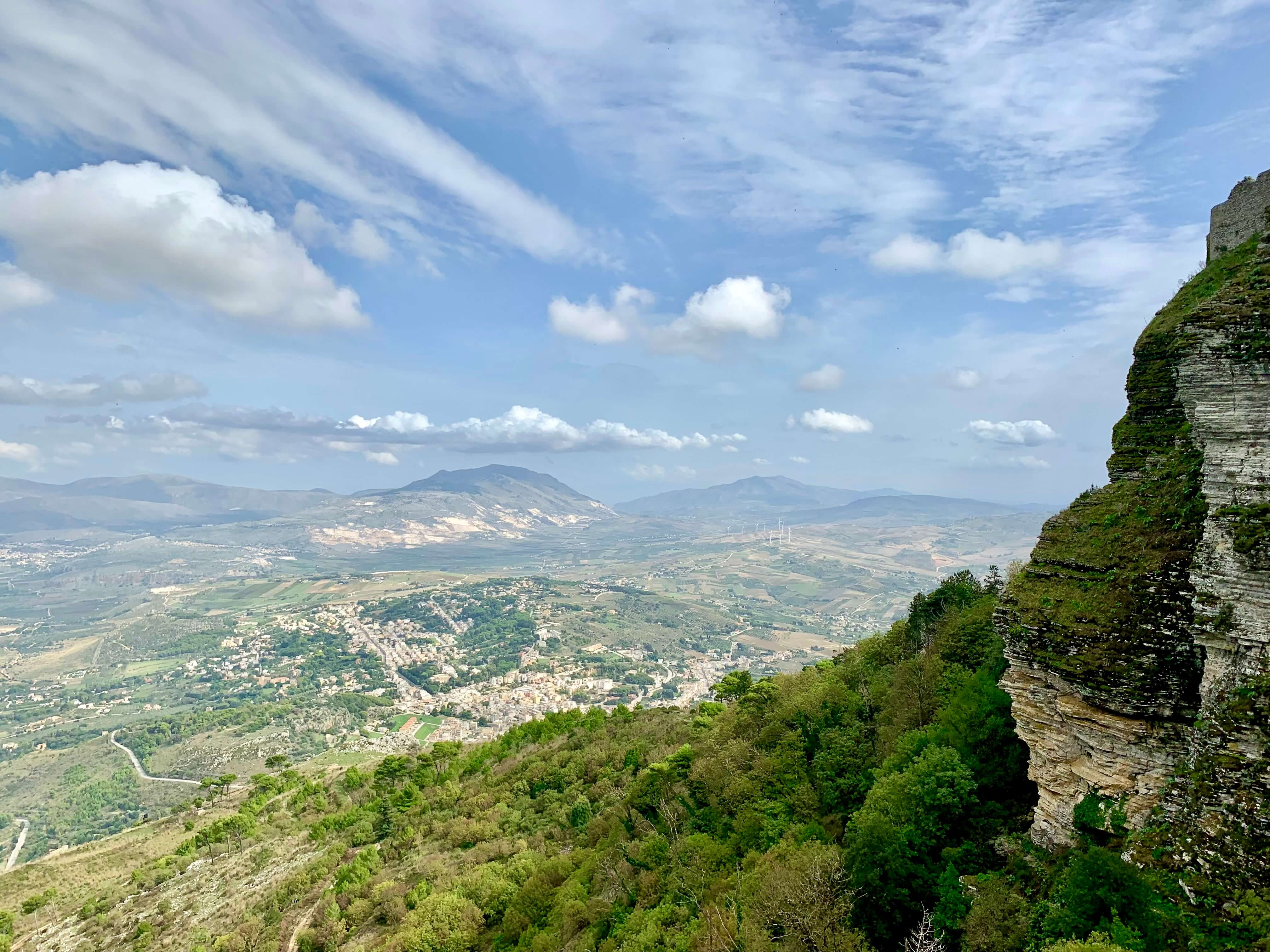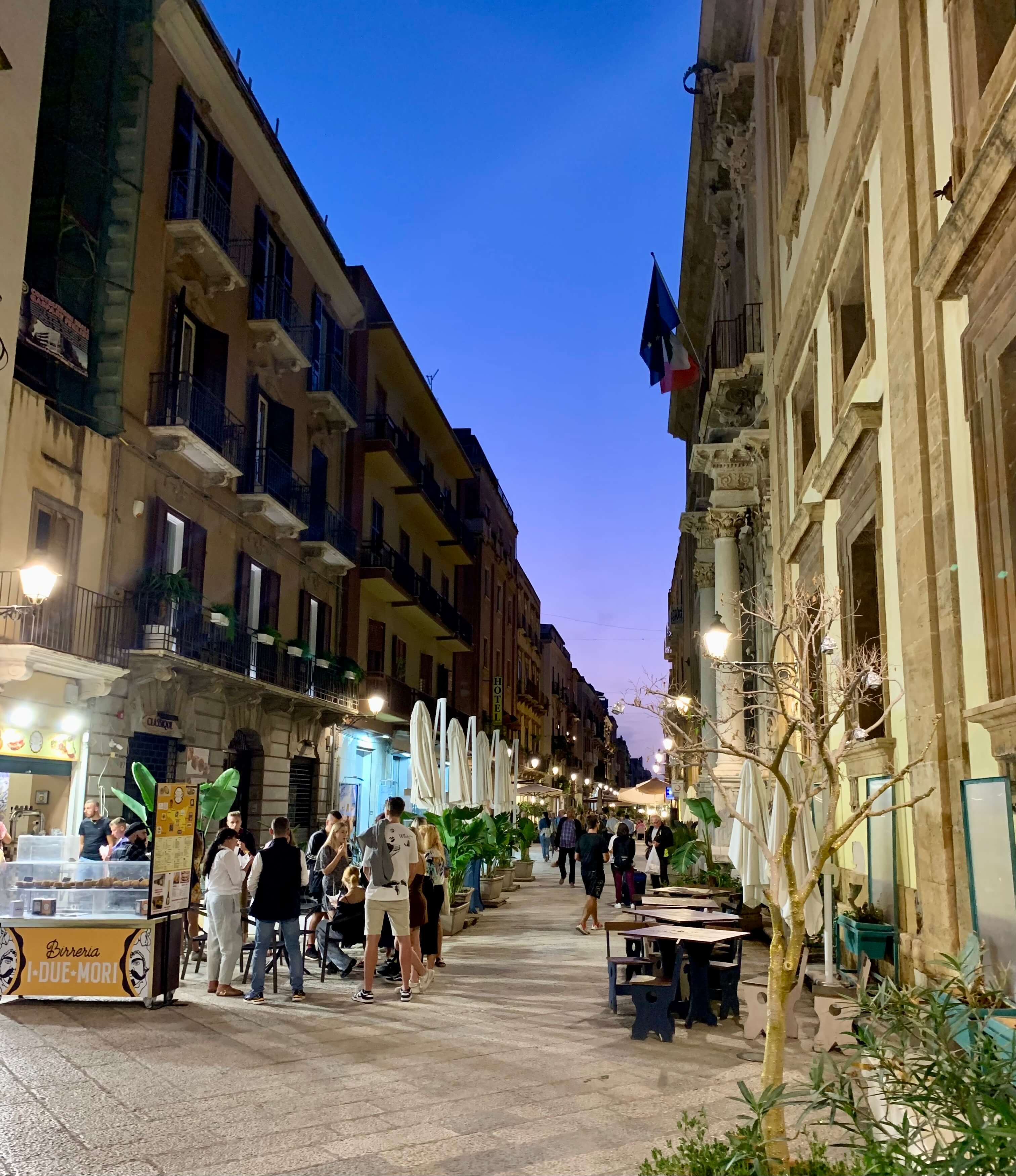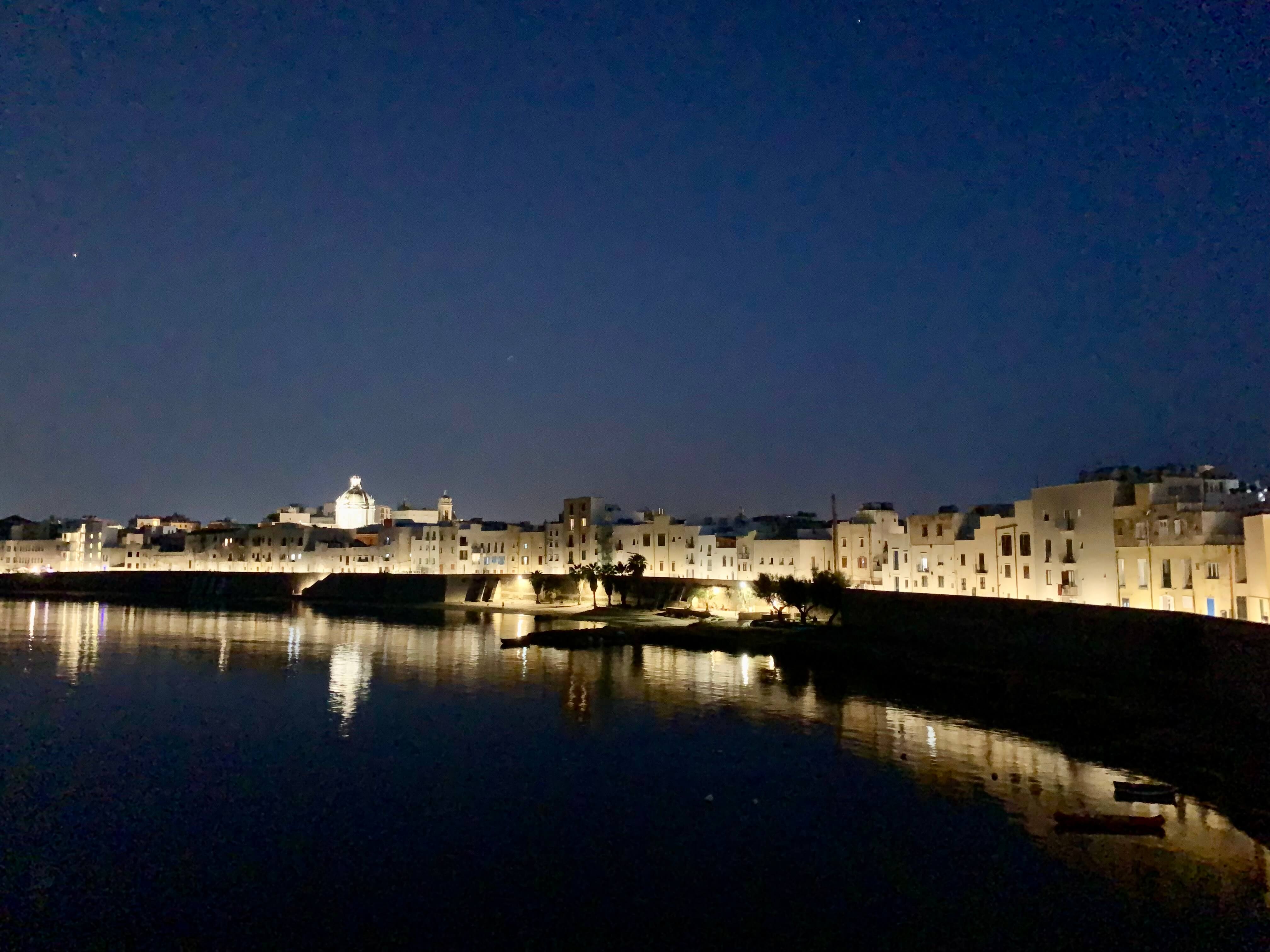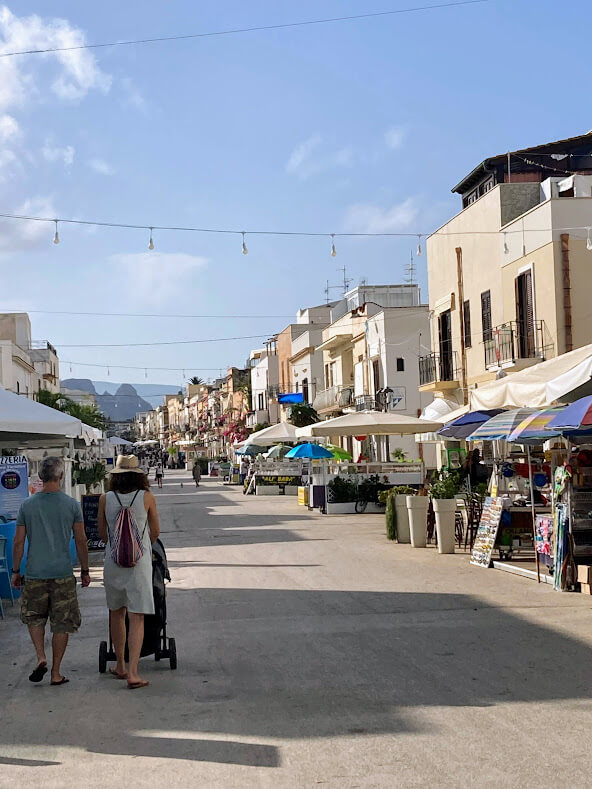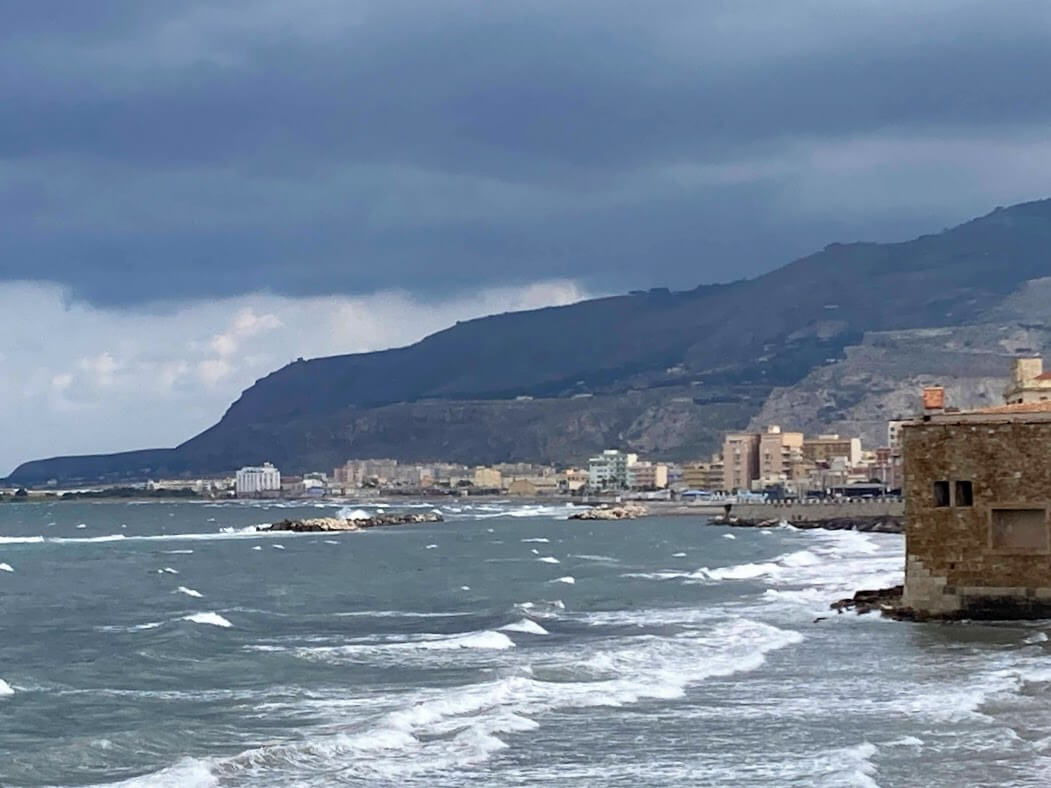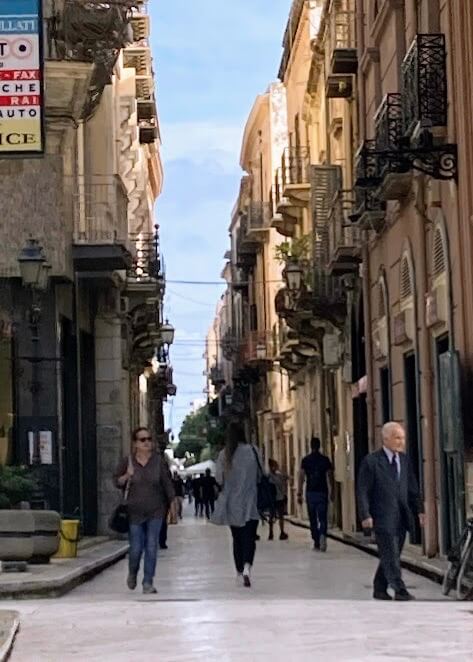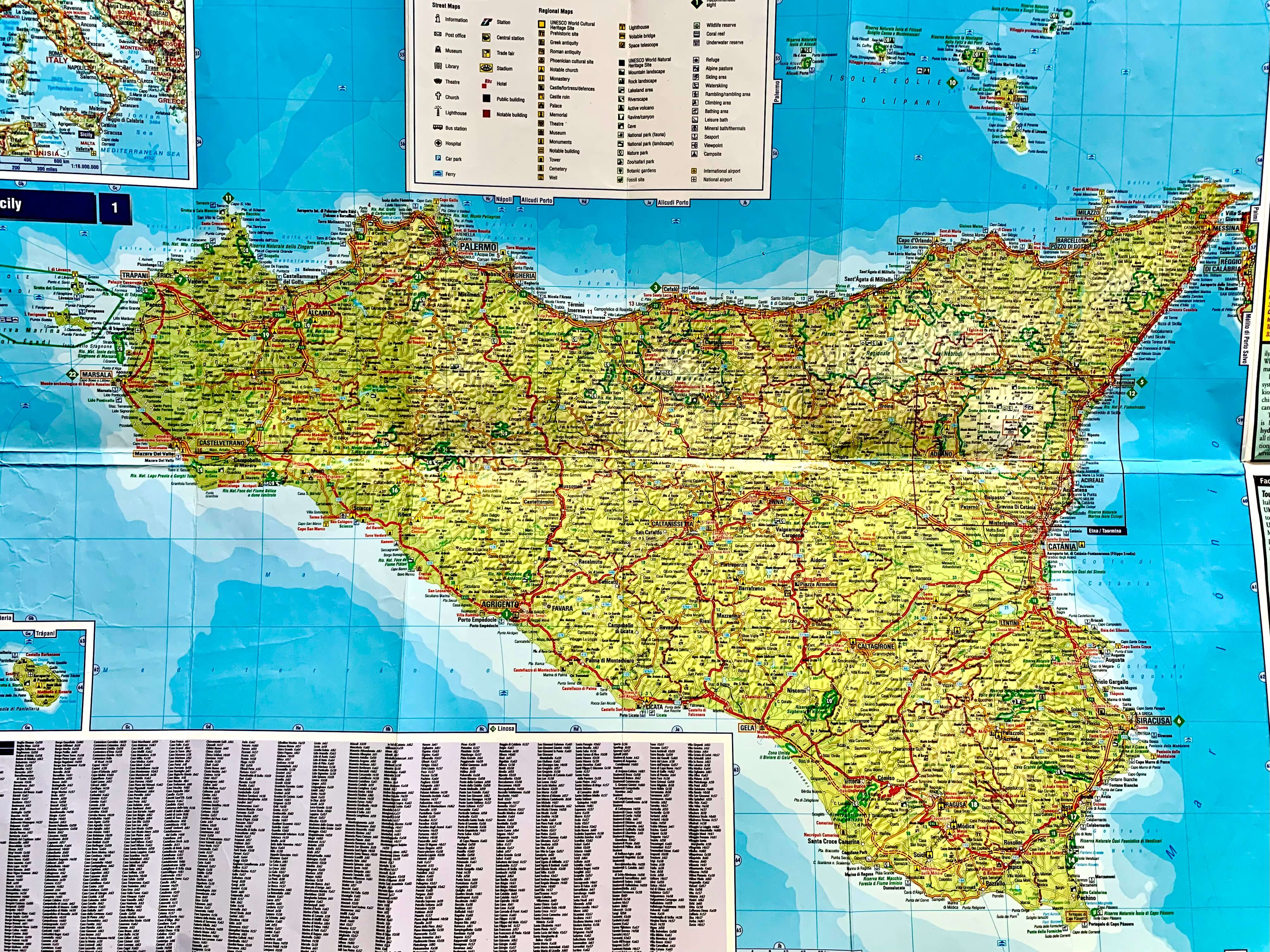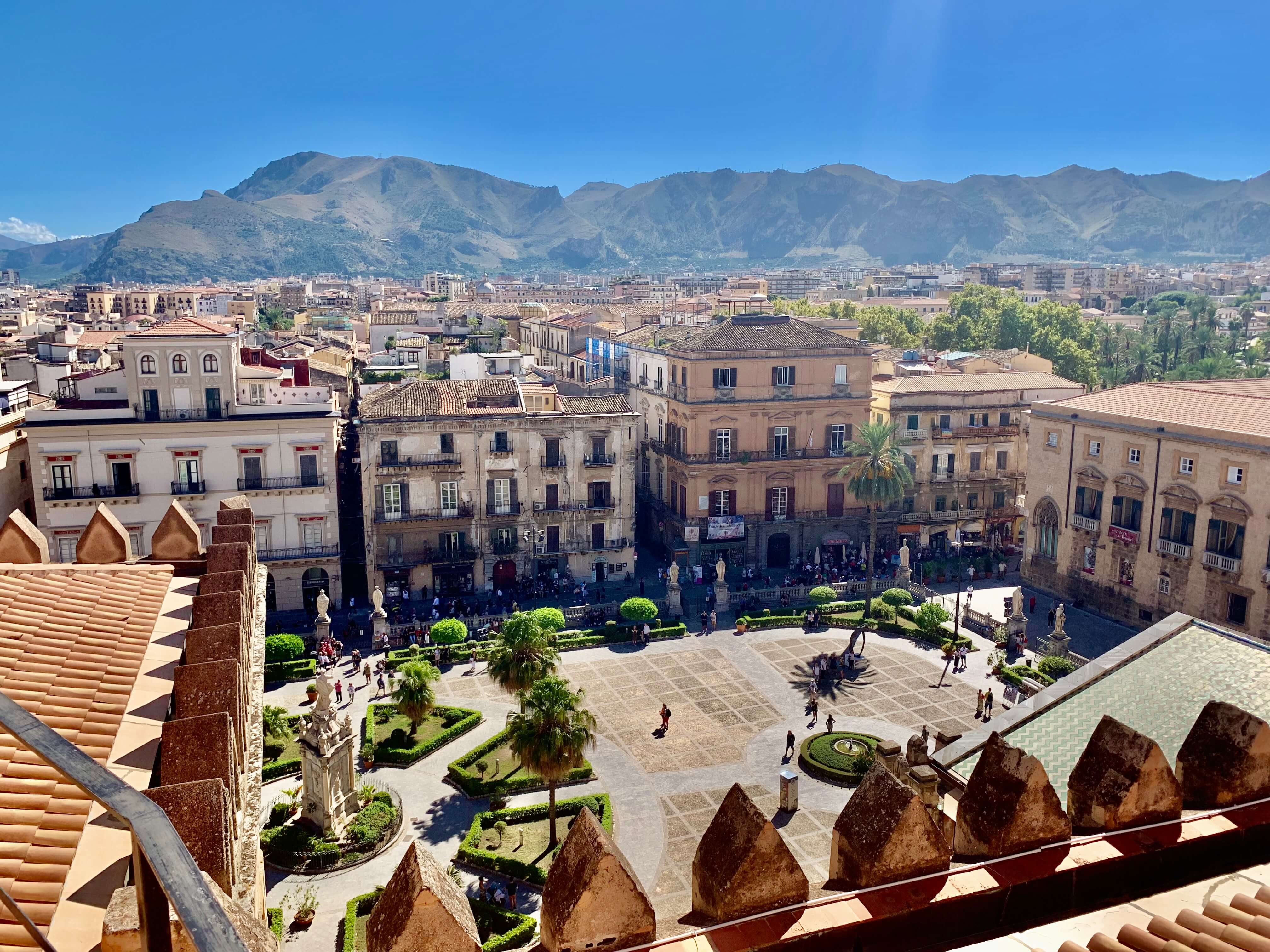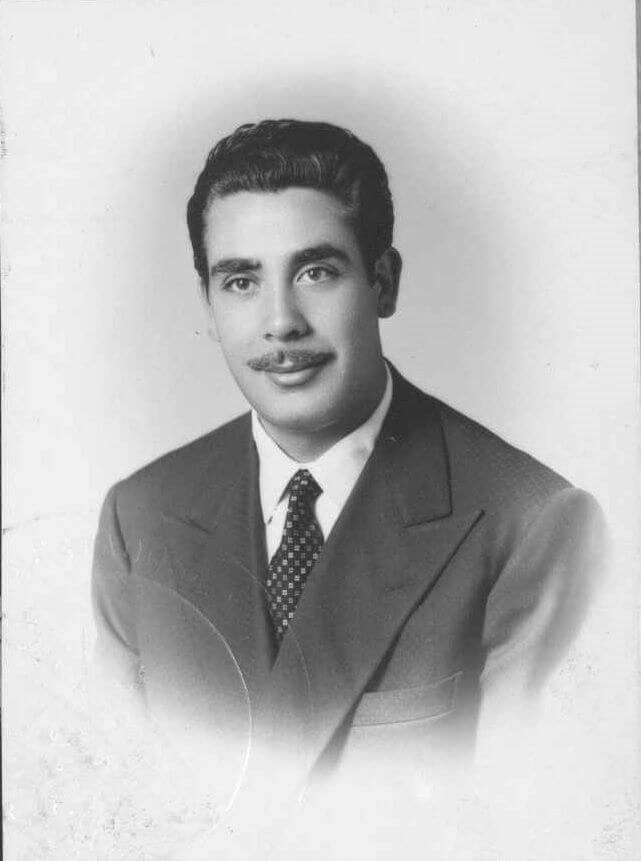- Home
- Main Cities in Sicily
- Trapani and Western Sicily
trapani and western sicily - what is there to see and do?
Welcome to Western Sicily, as we will journey to unearth some of its hidden gems. Immerse yourself in the vibrant history as you explore ancient ruins and majestic castles that testify to the region's past.
But Western Sicily isn't just about history; its natural beauty is equally captivating. From the pristine beaches of San Vito Lo Capo to the enchanting beauty of Erice, this region boasts awe-inspiring landscapes that will leave you spellbound.
Whether you're a history enthusiast, nature lover, or foodie, Western Sicily offers something for everyone.
Trapani - Our Main Base for Western Sicily
Trapani's central location makes it a good base for exploring western Sicily. Many of the region's attractions are only a short train, bus, or cable car ride away.
In the old town of Trapani, travelers will find a unique blend of cozy promenades, charming restaurants, and inviting cafés. Don't miss the opportunity to indulge in the local cuisine, which includes fresh seafood dishes and traditional Sicilian pastries.
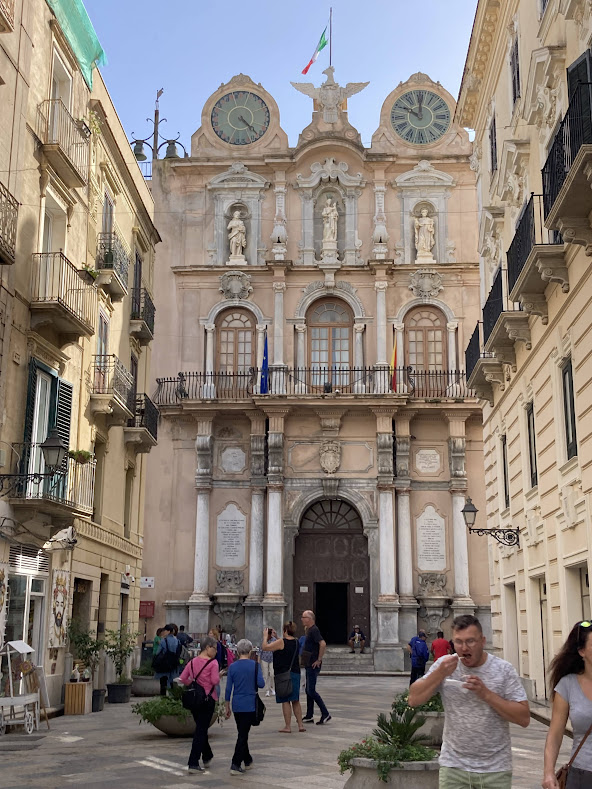 Walking street in Trapani's old town.
Walking street in Trapani's old town.Tourists usually focus on the old town when visiting Trapani. The city's main attractions are there, and you can see them in a day or two.
If you intend to visit other places—as recommended—you can easily spend a week in Trapani. However, you should also consider the variable weather, especially if traveling outside of summer.
For example, rain made our trip to Marsala more complicated than usual. A single heavy shower stopped the train services, and the main roads turned into puddles in places.
We also didn't get to the salt flats, as the road flooded after a night's rain. This was in October, so autumn was already on its way.
The Arab influence is more visible in western Sicily than in the rest of the island.
Western Sicily offers attractions such as nature, beaches, people, food, and an authentic way of life. It's also less touristy than the eastern parts of the island.
1. Hang Around, Eat, and Admire the Seaside Scenery at Trapani
Perhaps Trapani's most famous attraction is its embankment (Lungomare Dante Alighieri), which fringes the peninsula's northern edge. It is a great place to admire the sunset.
Below the embankment is a sandy beach where you can swim. Despite the town's proximity, the water is clean and clear.
From Lungomare, it is a short walk to the Vittoria Emanuele promenade. There are many places to eat and drink in and around it and a few restaurants/bars in Lungomare.
In the morning, it is worth visiting the fishing harbor. It is at the very tip of the peninsula, on the south side. There's a fish market where you can buy fresh fish.
For regular shopping, head to Corso Piersanti Mattarella. It is a long street with many shops selling food, clothes, meat, ice cream, and more. A shopping center is also at the other end of the road.
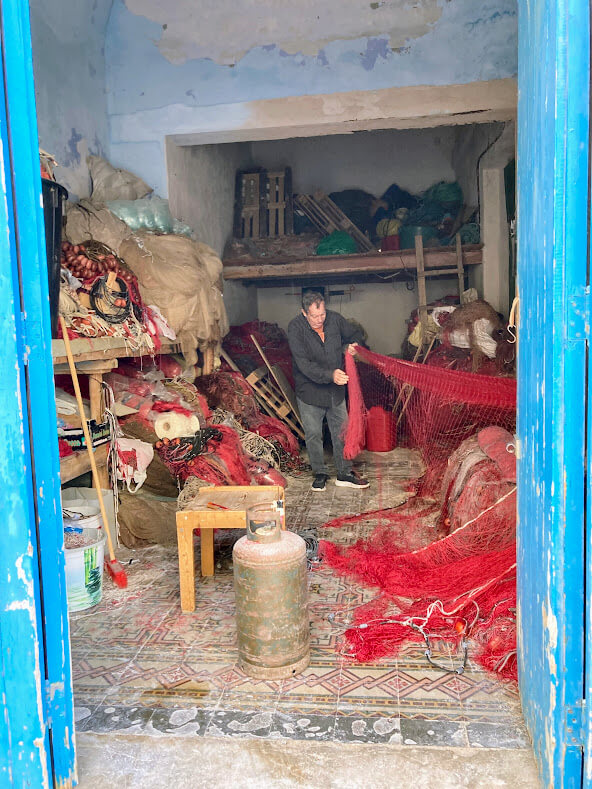 A fisherman in his "office."
A fisherman in his "office."2. Enjoy Nature, Scenery, and Beaches on the Island of Favignana
The Egadi Islands are a short boat ride from Trapani. The nearest of these is the island of Favignana. It is also the most easily accessible.
The island of Favignana is a peaceful paradise with several beaches and beautiful scenery. To get around the island, you'll need to rent a bike or scooter, which is available right in front of the harbor.
A Hydrofoil ticket from Trapani to Favignana costs a little over ten euros.
The Hydrofoil to Favigna leaves from the pier along the Via Staiti. It runs about once every hour and takes half an hour to complete.
Here, you can see the timetables for the Trapani and Egadi Islands.
3. Expand Your Views from the Hilltop Town of Erice
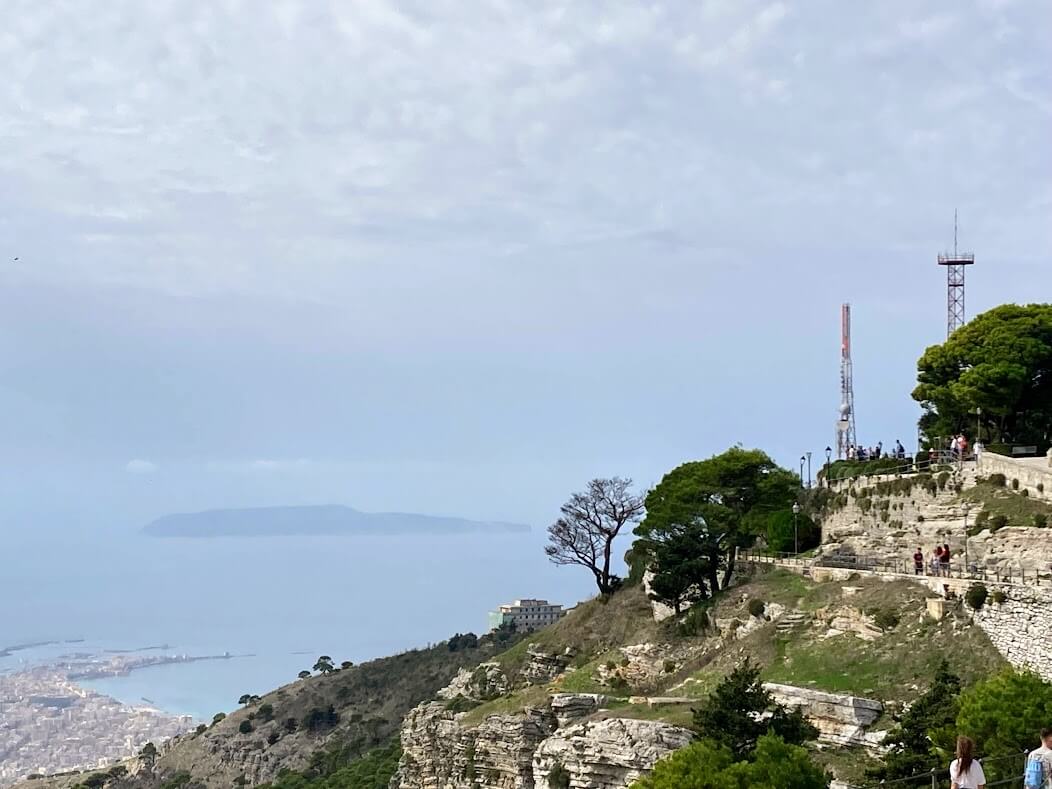 Trapani peninsula and the island of Favignana, seen from Erice.
Trapani peninsula and the island of Favignana, seen from Erice.The hilltop town of Erice is a good place to take in the scenery. Views stretch northeast to San Vito lo Capo, and to the south, the view opens up towards Marsala.
The Egadi Islands and the salt flats are also visible. Trapani salt is famous for its texture and taste, and it is filtered from seawater using traditional methods.
In addition to the views, Erice is known for its Norman castle perched on the edge of a cliff. Behind it are the ruins of the temple of Aphrodite, a fascinating historical site offering a glimpse into the town's ancient past.
The site was honored by the Carthaginians, Greeks, and Romans alike.
Or at least the sailors and soldiers from these countries respected the 'priestesses' who practiced prostitution in the temple.
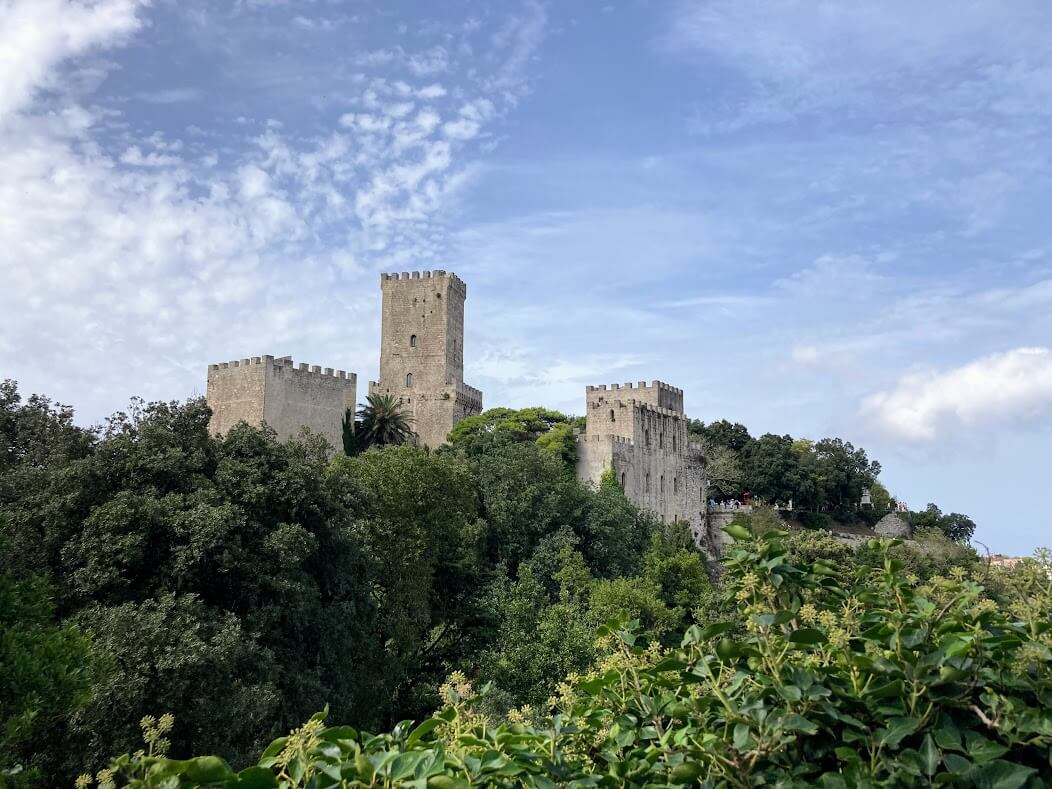 Norman Castle in Erice. The Temple of Aphrodite is behind it.
Norman Castle in Erice. The Temple of Aphrodite is behind it.In Erice's piazzas, you can find something to eat and drink. There is also a short shopping street.
The best way to get between Trapani and Erice is by cable car.
When the weather gets bad, you have to use the local bus. That's when the cable car is closed.
Check the weather before you go, especially if you plan to visit during the off-season. This will ensure you're prepared for any changes and can make the most of your trip.
4. San Vito lo Capo - The Best Beach in Sicily?
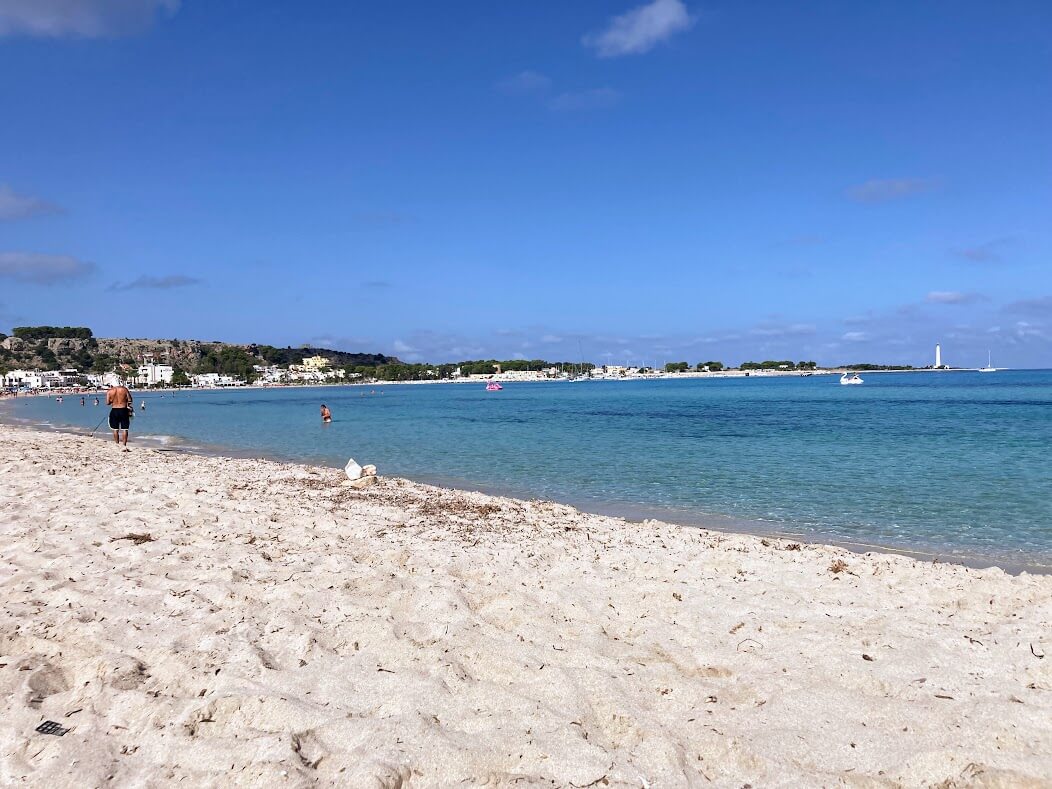
Some say that San Vito lo Capo is the best beach in Sicily. Maybe so, although the contest is rough. Anyway, the sand here is fine, the beach is long, and the views are good.
You can take a local bus from Trapani to San Vito lo Capo. The bus ride cost next to nothing.
When we visited the place it was the beginning of October, so the season was already over. Still, the temperature was closer to 30°C (86°F), and the water was warm.
The number of houses is low, and everyone seemed to be in the service of the tourist industry. There were lots of stalls selling beach supplies.
There were also vendors walking the beach, selling beach-related stuff.
Not surprisingly, the restaurants seemed touristy and quite pricy - at least compared to other, less traveled places in Sicily.
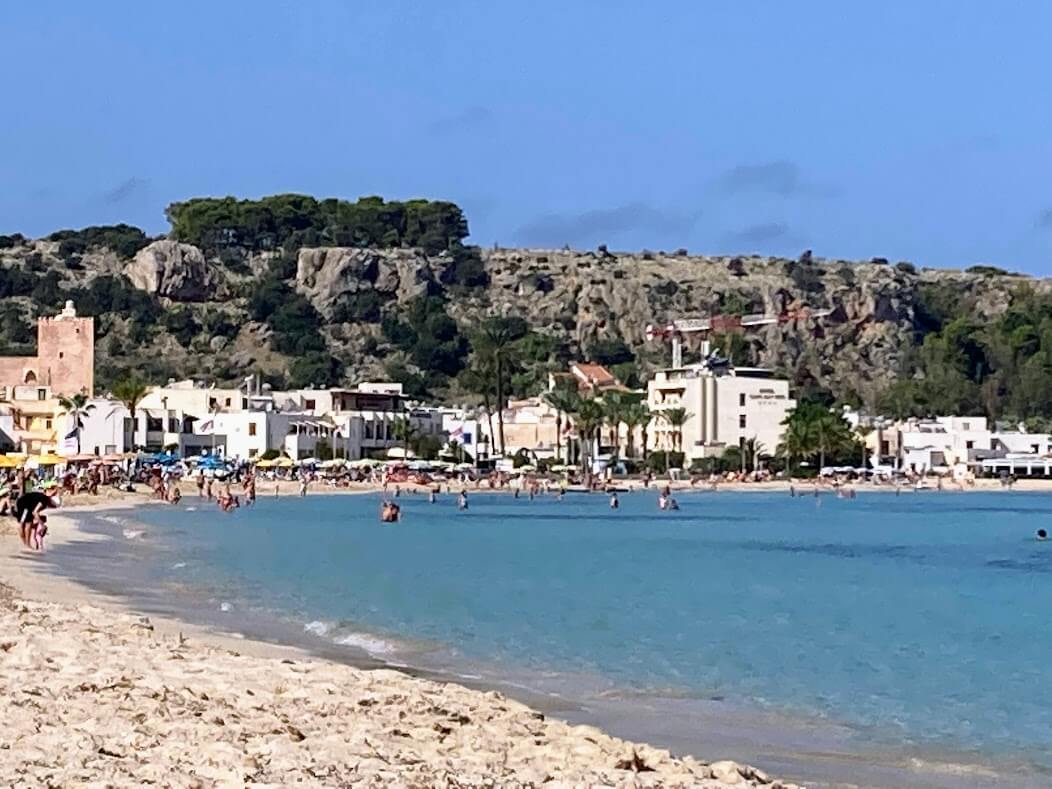 San Vito lo Capo, beach and town.
San Vito lo Capo, beach and town.When the evening came, I was happy to go back to Trapani. San Vito lo Capo may be the best beach in Sicily - who knows? I doubt I'd stay very long in the place, though.
It's not that I didn't like the sun, the beach, and the sea. However, the commercial atmosphere and lack of culture only suited me for a short time.
Still, I could go there for a few days and wander around, checking out the scenery and exploring nature. We didn't get to do that on this trip.
5. Think About Garibaldi and Sip Wine in Marsala
Marsala is known above all for one thing. It's where Garibaldi and his troops landed in 1860 and began the conquest of the then Kingdom of Two Sicilies. The expedition ended with the unification of Italy.
Oh, and then there is the wine.
Indeed, it may be the wine for which Marsala is best known, after all. Marsala is a fortified wine that has been known the world over since the late 1700s.
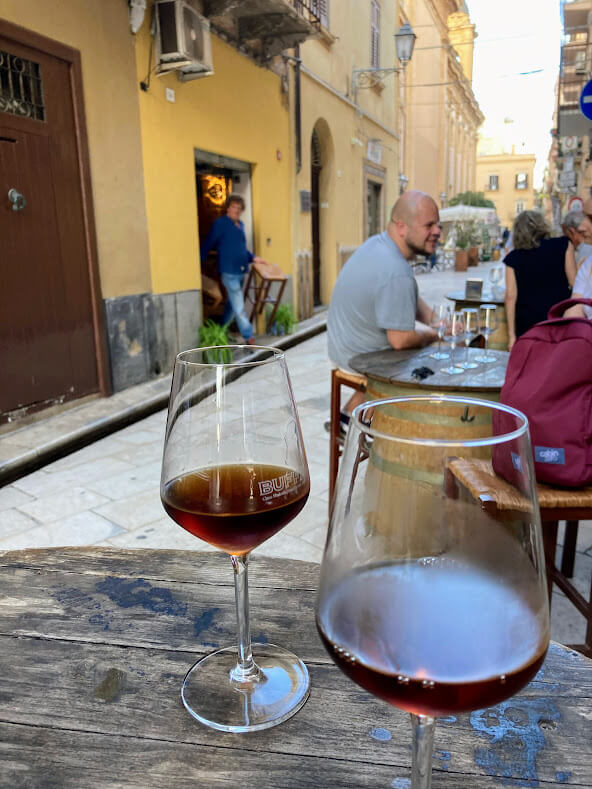 Drinking Marsala in Marsala.
Drinking Marsala in Marsala.But there is more to Marsala than just wine. Or Garibaldi.
Although Marsala has few attractions, it is still worth visiting. The old town is pleasant, and the shopping street is a popular place to stroll in the evenings.
The atmosphere is relaxed and informal.
For the sights, there is that place where Garibaldi and his men landed on Sicily. Just walk along Via Giuseppe Garibaldi and go through the city's gate.
Although Garibaldi has given his name to the gate, it was made hundreds of years before him.
From the city gate, walk towards the ocean, and there it is. At the seashore, there is a monument with the names of Garibaldi's men engraved.
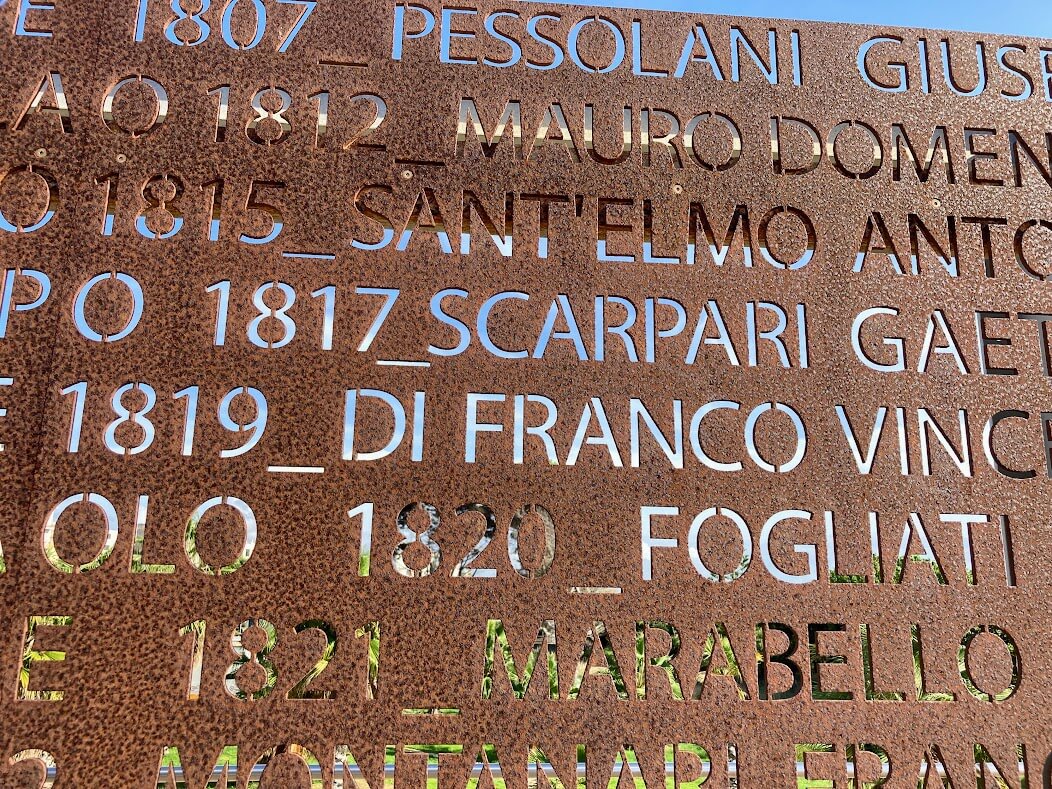 Some of the names in the monument of Garibaldi in Marsala. It is called "The Monument of the Thousand." I didn't count them, but they were plenty enough.
Some of the names in the monument of Garibaldi in Marsala. It is called "The Monument of the Thousand." I didn't count them, but they were plenty enough.After marveling at the monument and the sea, you can walk back along Via Giuseppe Garibaldi until you come to the town square. There is Marsala Cathedral.
You can sit on the side of the piazza and sip some coffee. Maybe eat something. I found it a great place to hang out and watch people.
Our trip to Marsala lasted only a day. I certainly would've liked to stay a bit longer, so I could visit the nearby island of Mozia - among other things.
Marsala could also make a good base for exploring areas further south.
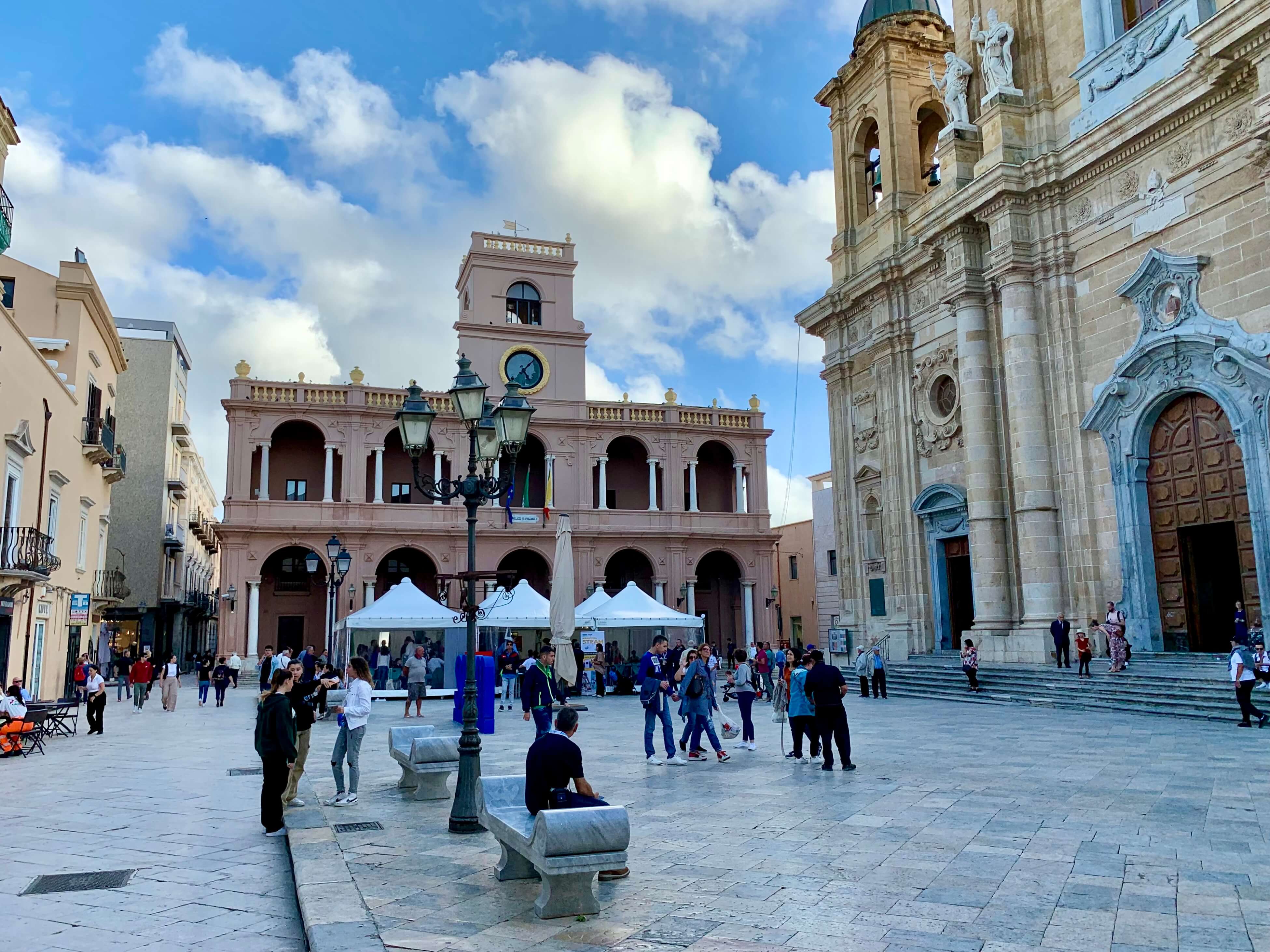 Piazza Duomo in Marsala.
Piazza Duomo in Marsala.The Weather in Trapani
Because of the mistral winds, the weather in Trapani is chillier than in the southern or eastern parts, especially in winter.
Still, the sun also shines. About a hundred and ten days a year. But the weather is a bit more volatile here than in the rest of Sicily.
The mistral wind blowing from the north makes the air cool and damp and causes rain and fog.
The weather changes in Trapani can happen quite quickly - from sun to rain and back.
Where to Eat in Trapani?
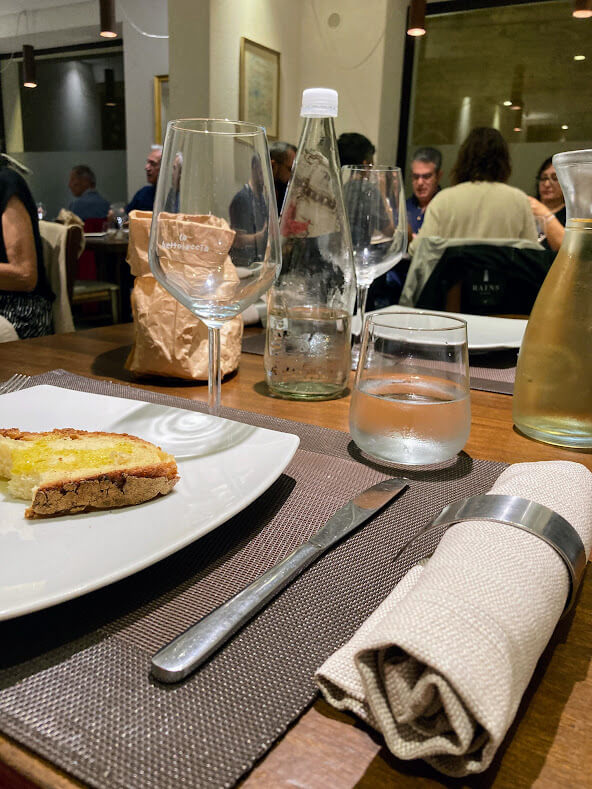 A restaurant in the old town of Trapani.
A restaurant in the old town of Trapani.Good places to eat are easy to find in the historic center of Trapani. Seafood is plentiful here and in western Sicily in general.
When looking for places to eat, head for the tip of the Trapani peninsula, particularly the area around Corso Vittoria Emanuele.
This promenade has plenty of restaurants and bars. And there are more on the side streets.
In many of the better restaurants, you need to book in advance. Prices are not unreasonable.
Conclusion
Even though we spent a week in western Sicily, we were nowhere near enough to see everything. For example, we missed the historical parks of Segesta and Selinunte and the island of Mozia.
Maybe next time.
There is a lot to see in western Sicily. Because of the distances between sights, getting around requires public transport or a car. (Here's more about car rental in Sicily.)
Western Sicily doesn't have as many attractions as the eastern part of the island. Still, the friendly and peaceful atmosphere more than makes up for this.
Western Sicily also doesn't impose itself like the East Coast. Exploring and enjoying it takes time, but patience will pay off. This is a great place to live the Mediterranean 'vita lenta'—meaning 'slow life.'
If time is short, you can concentrate on the attractions around Trapani, such as Erice, the Egadi Islands, Segesta, and San Vito lo Capo.
If you have more time, you can continue towards Marsala and further south towards Sciacca and Agrigento. Or head inland to places like Castelvetrano.
Indeed, there's always something worth seeing wherever you go.
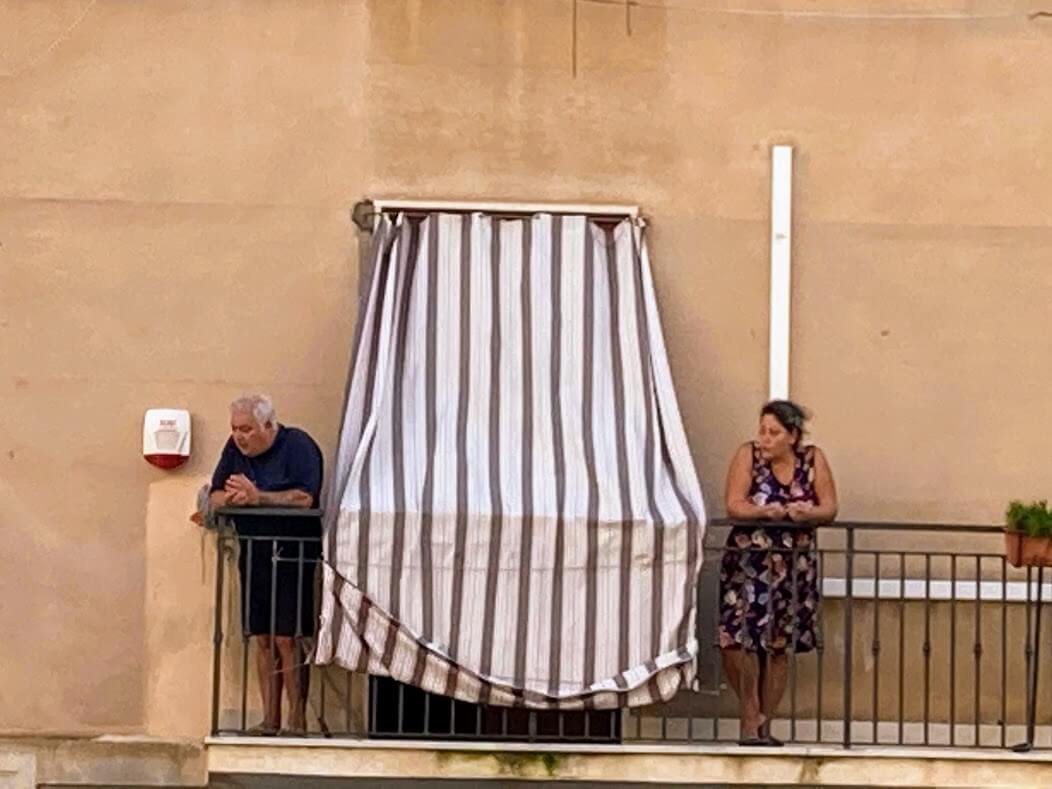
(This page last edited: December 14, 2024)
Recent Articles
-
Sicilian Food - Rich Flavors, Endless Passion
Apr 09, 25 09:54 AM
All you need to know about Sicilian food, its ingredients and history. -
Things to Do in Palermo - Tips for a Perfect Holiday
Apr 05, 25 04:27 AM
Things to Do in Palermo - From historic landmarks to delicious food, this guide has it all. -
The Story of Tommaso Buscetta: From Mafia Boss to Key Witness
Mar 30, 25 05:12 AM
Tommaso Buscetta built Sicilian Mafia into a global empire - which he then destroyed.
Follow MANY FACES OF SICILY on Facebook, Instagram, Bluesky & Pinterest
Contact: vesa@manyfacesofsicily.com
